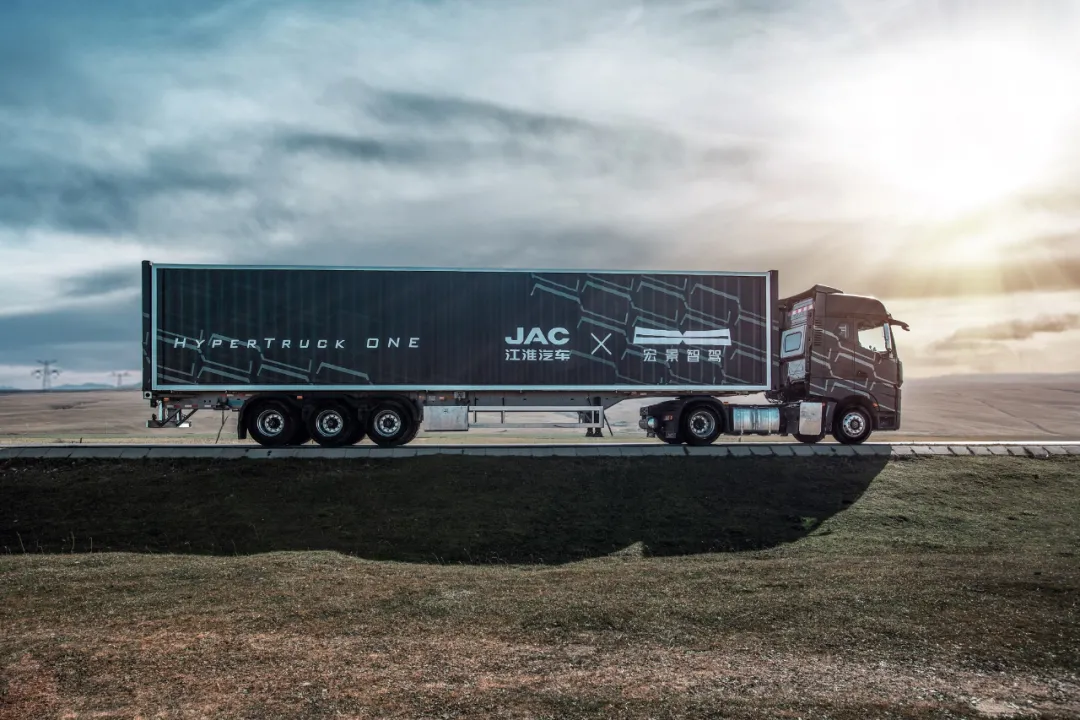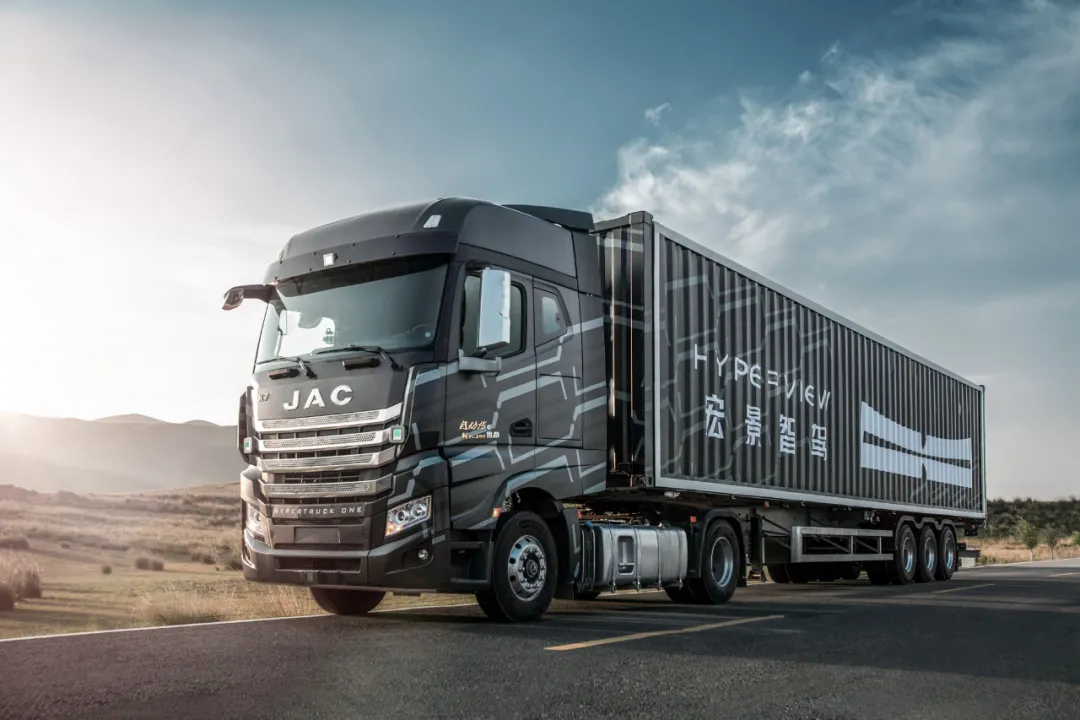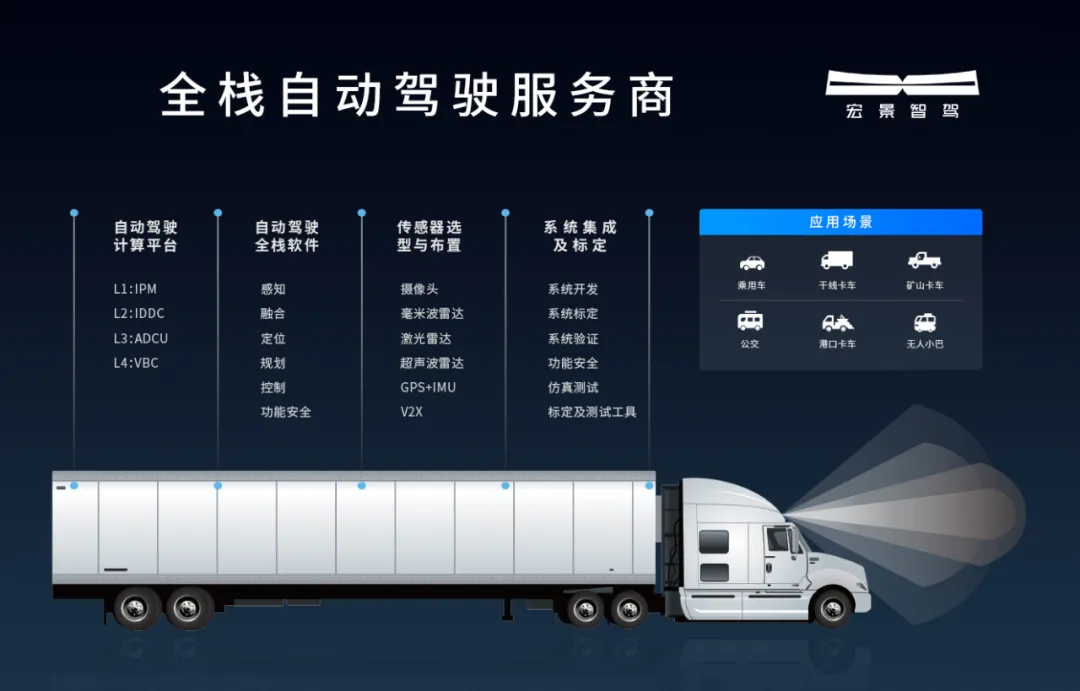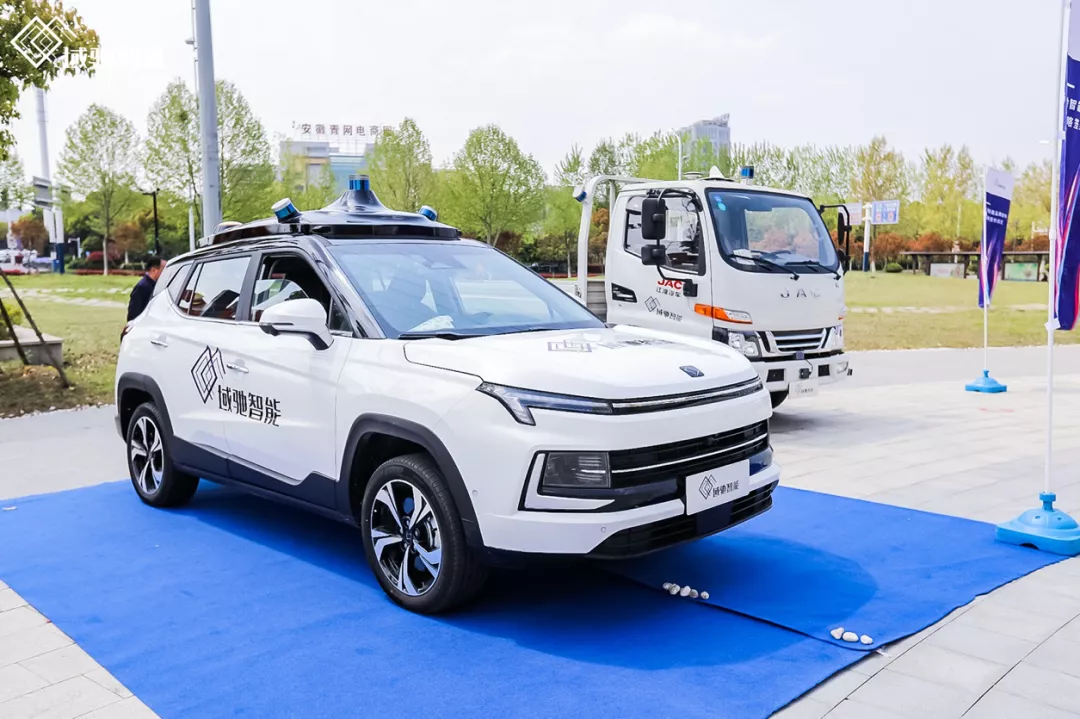<video controls class="w-full" preload="metadata" poster="https://upload.42how.com/article/image_20210927134420.png">
<source src="https://upload.42how.com/v/%E5%AE%8F%E6%99%AF%E6%99%BA%E9%A9%BE.mp4">
</video>
## Intelligent Heavy Truck Represents the Technological Height of Homogeneous Intelligent Driving
The intelligent heavy truck represents the technological height of Homogeneous Intelligent Driving and is also an experimental field for exploring new business models.
Trunk logistics is becoming the focus of competition for autonomous driving companies.
Since this year, Pony.ai and Baidu have successively announced the layout of smart heavy truck projects, and the original players in the raceway have also received capital attention. Tusimple has successfully landed on the New York Stock Exchange, becoming the first listed company in the autonomous driving raceway. WeRide has received a financing of 270 million US dollars, IMa Technology has completed a financing of 420 million US dollars, and plans to go public in the third quarter of 2021 in the form of SPAC.
Recently, another strong player in the autonomous driving raceway announced that it has joined.
On September 14, Homogeneous Intelligent Driving announced the cooperation with Jianghuai Commercial Vehicle to create the HyperTruck One for trunk logistics. HyperTruck One is positioned as an L3 level autonomous driving heavy truck and is expected to be mass-produced and off the assembly line in the first half of next year. It has already cooperated with top logistics operation platforms such as Aneng Logistics and Zhongchuang Logistics.
Seizing this opportunity, "Cyber Car" interviewed Liu Feilong, the founder of Homogeneous Intelligent Driving.
## Layout of the Underlying Logic of Intelligent Heavy Truck
If Robotaxi is the biggest scenario on the passenger car side, trunk logistics is the biggest scenario on the commercial vehicle side.
As raceway players are laying out trunk logistics, Liu Feilong believes that on the one hand, this indicates that technology companies and the capital market have begun to recognize the trunk logistics raceway more, and on the other hand, it also indicates that it is more difficult for Robotaxi to land in complex urban scenarios and still requires some time.
"Trunk logistics is a big raceway. From the perspective of technological landing, it is also a relatively good middle point, and it basically constitutes the underlying logic that everyone is willing to invest in this raceway."

The release of the intelligent heavy truck has two implications for Homogeneous Intelligent Driving, Liu Feilong said.
On the one hand, intelligent heavy trucks represent the high level of technology of Hongjing IMa. Hongjing IMa aims to build a complete set of software and hardware solutions for L3 and L4 scenarios, including laser radar perception, image perception, high-precision maps, navigation, motion planning, safety and vehicle-grade hardware. In the future, Hongjing IMa can break down the complete technology stack downward and support various product lines of L2, L2+.
On the other hand, intelligent heavy trucks are also the experimental field for exploring new business models. Traditional business models mainly focus on selling solutions, and their main source of revenue is the product of the vehicle model and the solution price. Intelligent heavy trucks are exploring a new revenue model, which may be based on service charges (Transportation as a Service).
Liu Feilong elaborated on the basic idea of the business model of intelligent heavy trucks: If autonomous driving technology is proven to bring value to operators, then when operators purchase vehicles, they will tend to purchase vehicles with autonomous driving capabilities. Purchasing needs will attract host factories to configure autonomous driving solutions for heavy trucks. Hongjing IMa can provide solutions for free in the early stage, and then charge through continuous services in the later stage.
In this process, operators reduce labor costs with the automatic driving system, manufacturers win procurement orders, and Hongjing IMa earns revenue through continuous service, achieving a win-win situation for all three parties.
The business model of intelligent heavy trucks is still under exploration. The prospectus of TuSimple Future once revealed its current two profit models: one is to operate its own fleet and provide mileage-based freight services; the other is to sell solutions to operators.
Hongjing IMa itself does not want to own the fleet, but hopes that the operator support will provide valuable business services. Through L3 autonomous driving technology, it helps cargo truck operators reduce operating costs and improve efficiency.
In the early stage when the technology is mature and put into practice, Hongjing IMa will first form its own fleet for testing and operation. Liu Feilong explained the logic behind it: on the one hand, polishing data and accumulating research and development, on the other hand, demonstrating the feasibility of the business model.
“Hongjing’s long-term goal is not to own assets. We are not trying to grab the fleet’s rice bowls. We just want to show the value that technology brings through the operation of the fleet,” Liu said.
Currently, Hongjing IMa has a fleet of six intelligent heavy trucks, with plans to exceed ten by the end of the year.
In addition, it is worth mentioning that among the existing players, TuSimple Future focuses on L4 autonomous driving, IMa Technology’s strategy is to prepare for both L3 and L4, and Yingche Technology starts with L3.
Hongjing IMa and Yingche Technology have similar ideas, and have also placed their flags on L3, which is consistent with their consistent business strategy of targeting deployability.
 The difference between L3 and L4 is whether a person is required in the car. Therefore, L3 is irrelevant to the Robotaxi scenario because it doesn’t reduce labor costs.
The difference between L3 and L4 is whether a person is required in the car. Therefore, L3 is irrelevant to the Robotaxi scenario because it doesn’t reduce labor costs.
However, unlike Robotaxi, traditional long-haul freight trucks often require two long-haul drivers, and L3 can reduce the demand for one driver. Therefore, L3 is also very valuable in the context of long-haul logistics.
The reason why L4 is not chosen directly is because L4 has relatively high difficulty in mass production and commercialization. Some believe that the combination of highways and urban roads is the worst scenario, and the entire scene may be no less complicated than the city center.
Building AI Drivers That Can Be Mass-Produced
“Established for three years, this year we can achieve mass production of 5 car models, the shipment of about 100,000 cars, and create almost RMB 200 million in revenue. No matter which industry you look at, it’s still impressive,” Liu Feilong said with a calm tone but couldn’t hide his pride.

From L1 to L4, the positioning of Hongjing Intelligent Driving is a full-scenario autonomous driving company.
Liu Feilong said that although Hongjing Intelligent Driving’s business scope seems to be relatively broad and covers many scenarios, the principle behind it is to create a platform-based software and hardware system, and then use low-cost adaptation to transplant it into different scenarios.
Hongjing Intelligent Driving’s technology stack is a universal soft and hard framework, and the software is modular. When facing different scenario applications, different modules can be taken out for combination to achieve different product landing.
“It’s easy to understand. If a heavy truck driver can drive a small car too, as long as you master the driving rules, we are creating universal drivers,” Liu Feilong said.
Thanks to his work experience in General Motors and Delphi, as well as the engineering ability of the entire executive team, Liu Feilong likes to use engineering ability and product availability to distinguish Hongjing Intelligent Driving from other players in the field.
Liu Feilong said he liked the industry’s term “mass-producible AI driver.” He explained that emphasizing mass production means that the engineering of software and hardware must be heavy, and there must be high performance but also cost and quality, as well as safety, etc.
“This is the difference between technology and product. Pure technology doesn’t mean it can be turned into a usable product.” While building technology, we must also take into account engineering landing. “Our goal is to have highly technological AI drivers that can also be mass-produced and landed.”
Hongjing Intelligent Driving follows the principles of down-to-earth and looking up at the stars, Liu Feilong said.
Steadily relying on L2 and L2+ projects to achieve large-scale production, commercial deployment is realized rapidly, bringing two benefits: one is cash flow, which is a common situation of burning money in the autonomous driving industry. “I hope we will be the earliest to end the burning money state.” Second, it realizes data accumulation. Autonomous driving research and development highly depends on data, and only by rapidly deploying mass-produced vehicles can there be a large amount of data feedback.
In the competition of autonomous driving technology, computing power, algorithms, and data are three key elements. Computing power represents hardware, and algorithms represent software capabilities. “The industry recognizes that YUCHI has both software and hardware capabilities, and the subsequent moat building relies on data accumulation.”
Looking up at the starry sky, Liu Feilong hopes that in the product matrix of YUCHI intelligent driving, there will not only be products that can make money in this generation, but also products that can drive the technology stack, like the Intelligent Heavy Truck project.
Although YUCHI intelligent driving has developed rapidly, Liu Feilong believes that “only by growing faster than the race track can we gradually grow up.” He plans to use cash flow and data to drive higher levels of technology stack research and development, polish new business models, and prepare for subsequent growth.
Autonomous driving has just started
After experiencing the low tide in 2018 and 2019, the autonomous driving field has become hot again in the past two years, whether it is the speed of capital or the flow of talents, demonstrating the vitality of this field.
Has the development speed of the autonomous driving field exceeded expectations? Does the influx of corporate clusters exist overheating problems? How to overcome the bottleneck faced by single-car intelligence?
Talking about the development pace of the autonomous driving field, Liu Feilong used the four words “rapidly changing” to describe it.
He admitted that when he started the business three years ago, he didn’t know clearly what he would do today. Because everyone’s decisions are based on the current environment and make the best judgments. With the progress of technology, changes in the business environment, and market demand, companies need to regularly discuss their strategies to adapt to changes and keep up with the pace.
“For example, three years ago, we didn’t think of doing intelligent trucks, but today, as the technology stack matures, and our understanding of long-distance logistics scenarios deepens, we believe that long-distance logistics is a very valuable high-level autonomous driving landing, so we have started to invest.”
Balancing “change” and “unchange” in the face of the flowing market is the task of every CEO of a startup company. Liu Feilong said that for YUCHI intelligent driving, there have been some changes in the implementation route, but the unchanged is the original intention of building a high-level autonomous driving technology stack.The four letters C.A.S.E represent intelligent connectivity, autonomous driving, shared mobility, and electric propulsion, which Daimler believes are reshaping the future of the transportation industry.
Liu Feilong also strongly agrees with this perspective.
He believes that the autonomous driving race has just begun from a macro background perspective. The development of the automotive industry has gone through two stages. The first stage, which lasted nearly 100 years, was dominated by mechanical engineering when automobiles were first born at the beginning of this century, cultivating a strong foundation for the automotive industry.
C.A.S.E represents the beginning of a new chapter in the automotive industry and will be the main theme for the next hundred years. It is very normal and rational for more and more people to enter this field. “I even think that the technology is still far from enough, and we will see more talents and businesses entering the competition in the future, which is a very good start.”
Regarding the path to achieving autonomous driving, Liu Feilong believes that China must take the route of vehicle-road coordination.
He explained that from a first-principles perspective, machines can eventually do what humans can do, provided they are as powerful as humans. Before that day comes, the shortcomings of cars can be well supplemented by vehicle-road coordination, which is a more practical path.
“I worked in the United States for 12 years. The infrastructure capacity in the United States has not yet caught up, so I emphasize the need for the car to be armed to the teeth with various sensors and strong computing power, making the car very intelligent. China can fully leverage its infrastructure advantages.”
He believes that China’s infrastructure capacity is very strong, which has been demonstrated in areas such as high-speed rail and 5G. Therefore, the path to achieving autonomous driving in China will undoubtedly feature smart cars and wise roads.
Conclusion
Liu Feilong leaves the deepest impression as a professional engineer with quick thinking, strong communication skills, and a sense of humor.
Before the formal interview, he joked that liberal arts students are suitable for creating service-oriented products, while science students are suitable for creating products that focus on efficiency and standardization, which is why he is particularly well-suited for the core logistics scene.
Liu Feilong worked in Detroit, USA for 12 years. In 2018, he returned to China to start a business and founded Hongjing Intelligent Driving, bringing back a group of colleagues and partners who had worked together in the United States.
In the “Cyber Time” series of interviews, we have met many senior experts and engineers like Liu Feilong who have chosen to return to China to start businesses. These people have shown us that China’s development of autonomous driving is a particularly promising and reliable path.
In “Thank You for Being Late,” Thomas Friedman said that Britain had mastered sea power in the 19th century and the United States had the technological advantage in the 20th century. The 21st century will be dominated by China.
This article is a translation by ChatGPT of a Chinese report from 42HOW. If you have any questions about it, please email bd@42how.com.